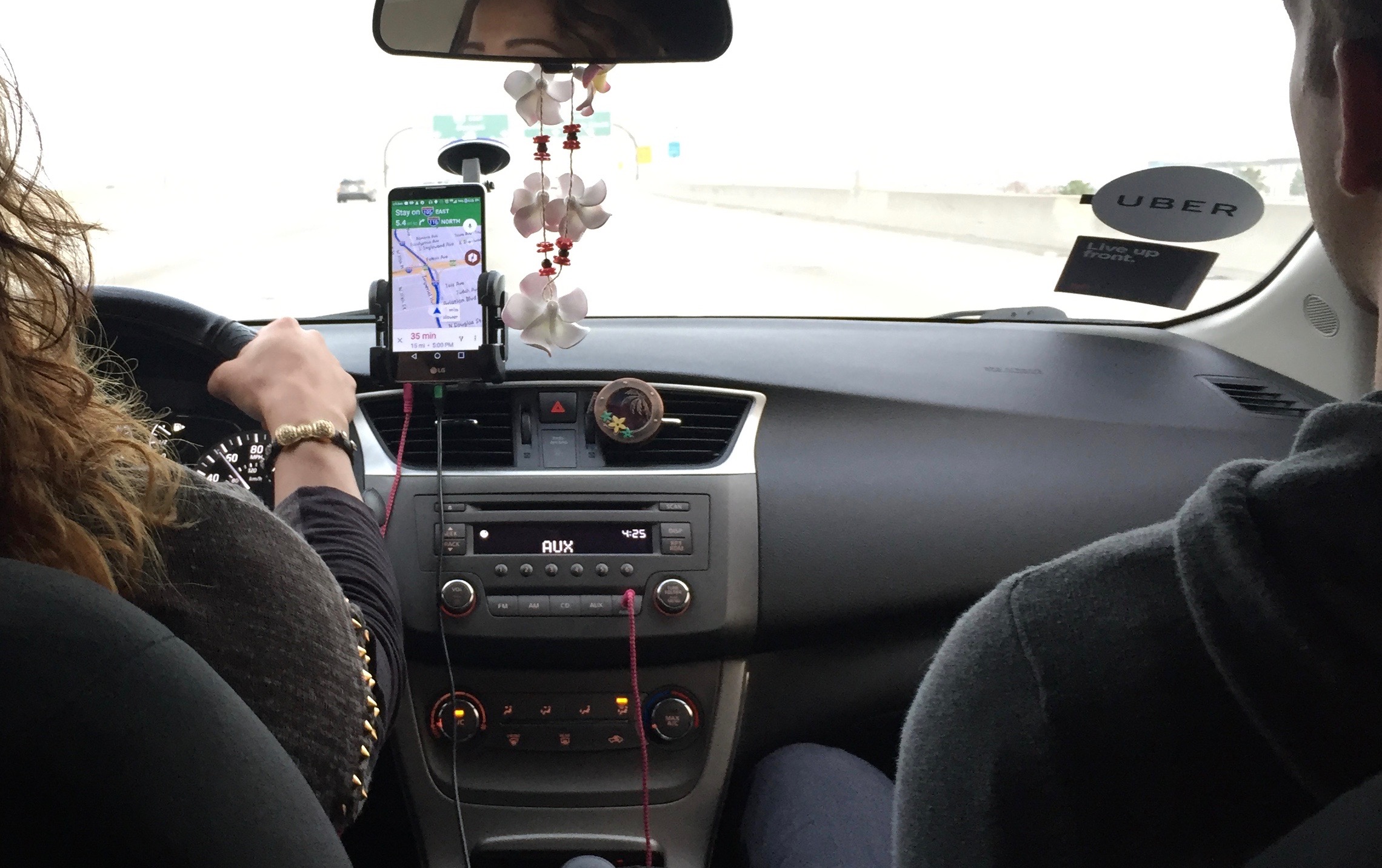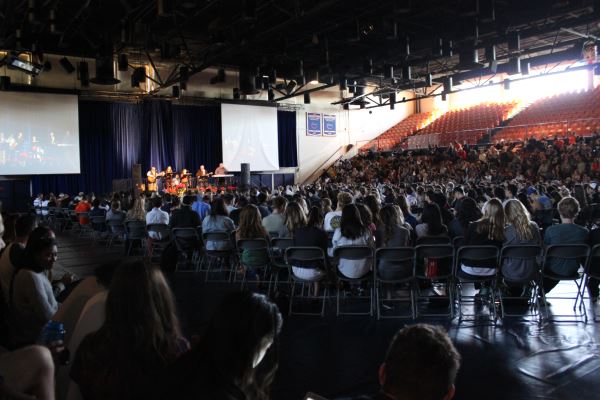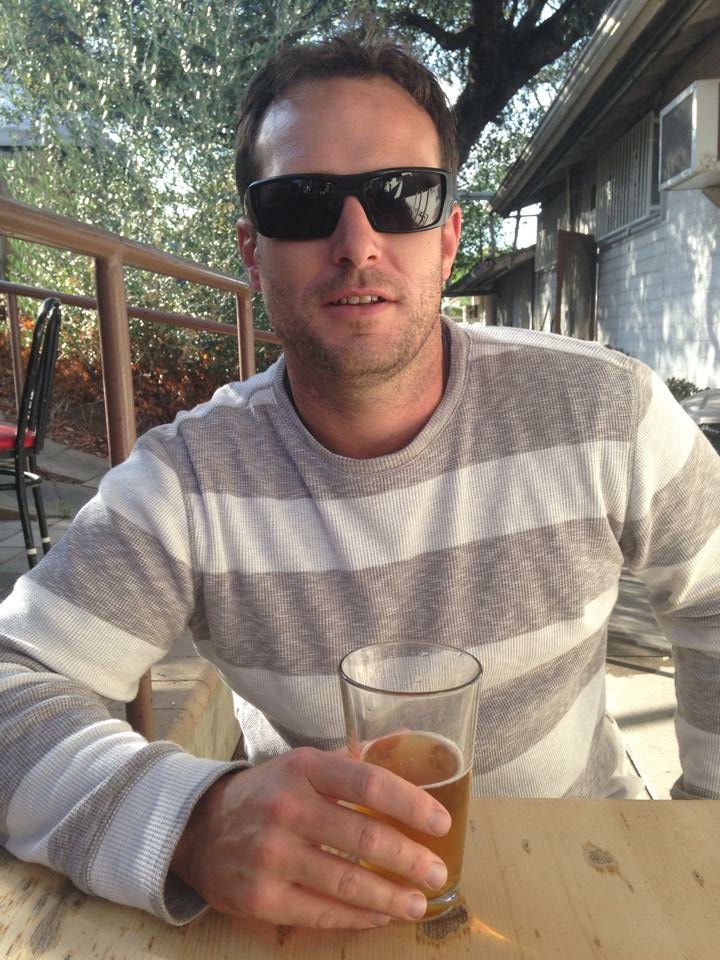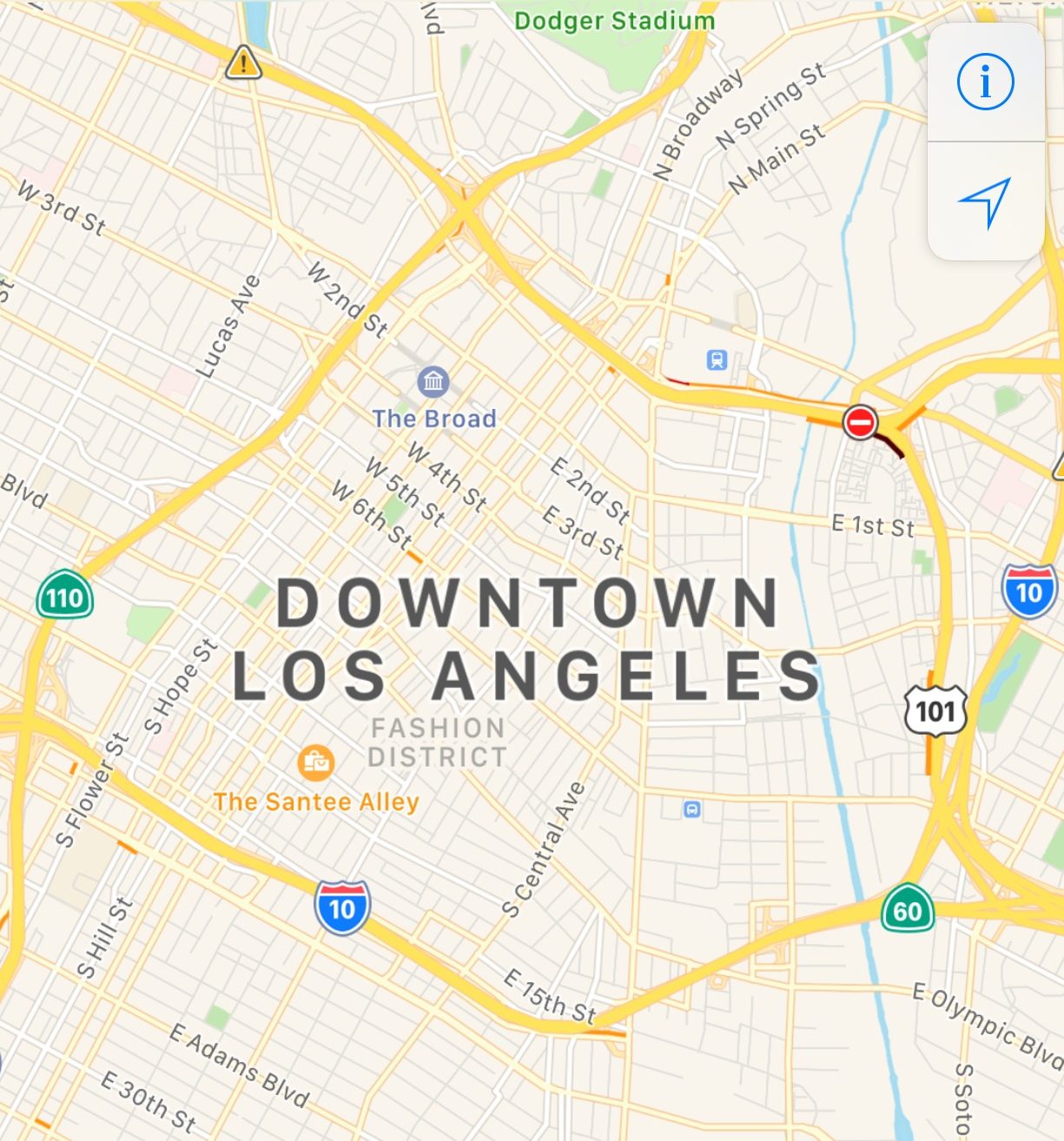
*Editor’s note: Some individuals in this story asked to be identified by their first name only.
Two accidents, two arrests for underage drinking and one arrest for drinking and driving just weren’t enough to convince Chris* to change some of his more reckless habits.
The convenience of Uber, however, was.
“I don’t think that it was necessarily the events, I think that it was the accessibility of the platform,” Chris said. “I think that if Uber didn’t show up, I would’ve just still made bad decisions. You know how decisions are, you go, ‘I’m never doing that again,’ and then slowly, as time goes by, you justify it. That’s just how people are.”
If the convenience and affordability of Uber were enough to convince Chris to stop drinking and driving, could its implementation have impacted other Californians as well?
Data from the Department of Justice and Department of Motor Vehicles reveals an obvious decline in Driving Under the Influence arrests in California over the past eight years. The data shows a nearly 34 percent drop between the peak height in arrests in 2008 and the end of 2015. New legislation, tougher laws and the introduction of ride-hailing apps like Uber may all be contributing factors.
Total number of annual DUIs for all of California, 2003-2015.
How much of an impact ride-hailing services have had on reducing DUI arrests is open for debate, even with Uber’s increasing size.
Uber was valued at $50 billion in late 2015, according to a Forbes’ article “The Value Of Uber.” Uber operates in more than 500 cities across the globe, according to Uber’s website. Numerous emails over two months to Uber’s listed press email went unanswered, so more recent financial data was not available.
Whereas some research points to Uber’s impact on reducing drunken driving accidents, other research is mixed. The California Highway Patrol and other peace officers said they can’t measure Uber’s role in reducing accidents or arrests.
“The CHP is not able to speculate on reasons behind possible trends, although we would be pleased to see a downward trend as driving under the influence continues to lead to needless injuries and deaths on our roadways,” Janelle Dunham, an information officer for the California Highway Patrol, wrote in an email. “If there is a decrease in DUI arrests, it could be due to any number of causes.”
In her email, Dunham cited several possible contributing factors besides Uber or other ride-hailing apps, including greater awareness of the dangers of drunken driving. DUI checkpoints and more stringent laws have also helped. Dunham wrote there is steep fines for first-time offenders, given the associated costs of an arrest and fine can be more than $15,000.
The power of legislation
Lawmakers put several new laws in place circa 2008, when the decline first started to appear, according to the Department of Motor Vehicle’s “2015 Annual Report of the California DUI Management Information System.”
- Senate Bill 1697, effective Sept. 20, 2005, assigned sole responsibility for imposing driver license actions for DUI arrests and convictions to the DMV, and removes this responsibility from the courts. It also ensures that all persons convicted of a DUI will receive a license restriction, suspension, or revocation of the driving privilege.
- Senate Bill 571, effective Jan. 1, 2006, lowers the blood alcohol level (BAC) at which the court must consider enhanced penalties from 0.20 to 0.15 percent, if a person is convicted of a DUI.
- Assembly Bill 2752, effective Jan. 1, 2007, makes it an infraction for a person under the age of 21 to drive with any measurable (0.01 percent or greater) blood alcohol concentration. Persons under the age of 21 will now be subject to criminal penalties.
- Senate Bill 1190, effective Jan. 1, 2009, reduces the blood alcohol level (BAC) at which the court may require first-time offenders convicted of a DUI to install an ignition interlock device (IID) from 0.20 to 0.15 percent at the time of arrest.
- Assembly Bill 1165, effective Jan. 1, 2009, authorizes law enforcement to issue a notice of suspension and impound the vehicle of a convicted DUI offender who is on probation and is driving with a BAC of 0.01 percent or greater (as measured by a preliminary alcohol screen test or other chemical test).
California Senate Bill 1046, of which Mothers Against Drunk Driving (MADD) is an open supporter, requires that for the first DUI offense involving an injury, an ignition interlock device would be required for six months. For the first non-injury DUI offense, the offender may choose to have an ignition interlock device for six months with full driving privileges, or a one-year restricted license that only allows driving to work and attending a treatment program. For the second DUI offense, a device would be required for a year. For a third DUI, one would be required for two years. And for a fourth, and any subsequent DUIs, an ignition interlock would be required for three years.
The bill, which Gov. Jerry Brown signed into law Sept. 28, will expand an existing ignition interlock pilot program in California that required interlocks for all convicted drunken drivers in Alameda, Los Angeles, Sacramento and Tulare counties, covering roughly 13 million people. The statewide program will go into effect Jan. 1, 2019.
On average, an interlock device costs the convicted individual $70-$150 to install and $2.50 a day for monitoring and calibration, according to the Shouse California Law Group, a firm specializing in criminal defense.
Uber’s impact
Recent legal measures and Dunham’s list of contributing factors help explain why the decline in DUI arrests started to appear in 2008, two years before Uber made it to California. Uber started in San Francisco County in May 2010. Uber came to Los Angeles County in March 2012, San Diego County in June 2012, Sacramento County in February 2013, Fresno County in February 2014, Riverside and San Joaquin Counties in May 2014, Kern County in June 2014, and Ventura County in July 2014, Noli Brazil and David S. Kirk wrote in their American Journal of Epidemiology article “Uber and Metropolitan Traffic Fatalities in the United States.”
“We looked at the top 100 metropolitan counties in the United States and examined whether or not Uber’s availability led to some sort of noticeable decrease or change in traffic fatalities,” Brazil said. “We examined total traffic fatalities but also traffic fatalities by weekend and also drunk driving, and we found that, at least on a city-wide level, we found no noticeable influence or change on traffic fatalities for the cities that had Uber available at least within the last five years.”
The implementation of Uber in a number of different counties across California has come with varying results. The year Uber came to Los Angeles County, there was a 1.4 percent decrease in DUI arrests, the year after there was a 5.5 percent decrease.
San Diego County, where Chris was arrested for drinking and driving in 2011, saw a 14.0 percent decrease the year Uber arrived and an 8.4 percent decrease the following year.
In Sacramento County, however, the year before Uber arrived there was a 24.5 percent decrease in arrests, but the following year saw a half point increase. And Fresno, San Joaquin and Ventura Counties all had more than 10 percent decreases in arrests the year before Uber showed up, making it difficult to recognize the impact of the company’s arrival.
Of all the DUI arrests that occurred in California in 2013, 23.4 percent occurred in Los Angeles County. Los Angeles, San Diego, Orange and San Bernardino counties all had more than 10,000 DUI arrests each, making up 45.5 percent of all arrests in the state, according to the DMV’s 2015 DUI report.
Brad N. Greenwood and Sunil Wattal from the Fox School of Business at Temple University examined Uber and Lyft’s effect on crash statistics, specifically crashes where someone was killed, in their January 2015 study “Show Me The Way To Go Home: An Empirical Investigation of Ride Sharing and Alcohol Related Motor Vehicle Homicide.”
“What we found was that there was a significant effect in the areas where uberX was implemented, as much as 3-5 percent per quarter,” Wattal said.
However, the obvious decline in DUI arrests in California cannot be attributed solely to ride-hailing apps like Uber, Greenwood said.
“If we just say, ‘Oh, Uber showed up and it’s going down,’ that’s really misleading,” he said, “because there’s this overall trend and change early and we need to account for that before we start making the bold claim that it’s because of Uber.”
The DMV also collects data on DUI-related crash fatalities, which saw an uptick in 2012 and 2013 after five years of decline.
Uber and MADD teamed up for their own study. They found that Uber has made a positive impact on DUI-related accidents in a number of major U.S. cities. The first of-its-kind comprehensive study, “More options. Shifting mindsets. Driving better choices,” published in January 2015, “revealed that Uber is more than just a convenient transportation option.” Their findings also uncovered that monthly alcohol-related crashes decreased by 6.5 percent among drivers under the age of 30 following the launch of uberX in California markets where Uber operates.
The study claimed that “there is a direct relationship between the presence of uberX in a city and the amount of drunk driving crashes involving younger populations.”
Now an avid Uber user, Max* said he got into a serious car accident while driving drunk in 2008. Even though no one was hurt, and there were no legal ramifications, he said it significantly changed his views on drinking and driving.

“That really scared the heck out of me,” Max, who is now 25 and works in real estate, said, “and after that I pretty much stopped drinking and driving. When I was at UC Davis, the town was so small, I just walked everywhere. And now that I’m in LA, I just Uber everywhere. I guess the accident, combined with how cheap and easy Uber can be, it just seems like the most logical thing to do.”
Uber is now perceived as a smart alternative to drinking and driving, not just by people who take advantage of the service, but by those in the law enforcement as well.
“That’s helped so much,” Sgt. Brad Clifton, a 27-year veteran of the Ventura County Sheriff’s Department, said.
“Uber and Lyft, those are really great programs and, in reality, they’re easy to use,” Clifton said. “They have to be easy to use for people to take advantage of them, and getting a ride from a third party is as easy as it’s ever been, and they’ve been a great help.”
The influence of enforcement
The Santa Monica Police Department’s Special Enforcement Division’s job is to enforce the vehicle code, address traffic safety issues, and reduce the number of collisions. This includes the reduction of DUIs, said Officer Peter Lashley, who has been with the division for eight years. Lashley was unable to comment on the impact of any specific law but said the department supports any legislation that contributes to the reduction of DUI occurrences and the number of impaired drivers on the road.
One thing that has affected DUI enforcement, at least in Thousand Oaks, is the grant money that started coming in from the California Office of Traffic Safety four years ago, said Clifton, who currently works for the Thousand Oaks Traffic Bureau. Thousand Oaks doesn’t have their own police force, so they have a contract with the Ventura County Sheriff’s Department. These funds have been used to fund DUI specific patrol cars, whose sole job is to handle DUI enforcement, and also DUI checkpoints that screen every driver who passes through.
Voice of Sgt. Brad Clifton of the Ventura County Sheriff’s Department
The effectiveness of these programs is still undetermined, Clifton said. Arrests and collisions in the city of Thousand Oaks have both gone up in the past year. This time last year, the Ventura County Sheriff’s Department made 141 DUI arrests in Thousands Oaks, this year they have made 190 arrests, and DUI-related collisions went up from 61 last year to 69 this year.
“Again, this is just Thousand Oaks, you want to compare apples to apples,” Clifton said.
Another technique police departments use to attack the issue of impaired driving is advanced detection training, Clifton said. All officers are trained to administer a standard field sobriety test to try and detect if a driver is impaired. The next level of training is the Advanced Roadside Impaired Driving Enforcement (ARIDE) program, and then finally officers are trained as drug recognition experts.
The California Highway Patrol trains these experts to recognize the effects of a range of different substances, drugs and alcohol, Clifton said. These officers are trained to distinguish between the effects of a number of different drugs, and alcohol, using the body’s physiological responses.
“Again, because of our traffic grant, we’ve been able to send more and more people to become drug recognition experts — DRE’s,” Clifton said. “I think we’re actually better at it now that we used to be. I think maybe some people slipped through the cracks back in the 90s, but I think now we are better trained, and that’s allowed us to enforce the law better.”
Chris’ arrest for drinking and driving came when he got pulled over for making an illegal turn and the officer smelled alcohol on him from the night before. The officer asked him if he had been drinking and if he was OK to drive. Chris said he was wholly confident that he was fine.
“I said, ‘Look, man, if I take the tests and I’m under, will you let me go? I’m going to work,’” Chris said, “and he goes, ‘Sure!’ And I didn’t pass, I came out right over the legal limit.”
The second time’s the charm
Mike* got his first DUI in February 2015. He said he was devastated and scared of the financial burden, but just three days short of a year later, he got into a fender bender in a parking lot after having a few beers and received his second DUI. Mike said he isn’t the type of person to get into this kind of trouble, but the consequences of the first DUI weren’t enough to influence his behavior.
“That was the first time I’d been in jail and that was impactful, but not impactful enough to make a big difference,” Mike, now 25 and a part-time soccer coach, said. “The second one, that was not the case. Now I wouldn’t even think about it, and not just because I can’t because of the interlock system in my car.”
After his first DUI, Mike enrolled in the San Diego State University DUI program. The mandatory program was three months long, consisting of one group meeting a week and eight hours of educational classes. The treatment program for the second DUI lasts for 18 months, with weekly group meetings and AA meetings, as well as eight more hours of educational classes. He will also lose his license for a year and when he is finished with the program, he estimates he will have spent around $8,000.
For the next five years, Mike must have zero alcohol in his blood if he is operating a motor vehicle. If he is caught with anything above 0.0, he could spend several months to a year in jail. Mike said he leans more toward not drinking at all or just staying at home, but in the off chance he does drink and needs transportation, he said he will take a Uber or have someone else drive.
Voices of the victims
One of the most effective techniques MADD uses to deter impaired driving is victim advocacy, Jason Derscheid, an executive director for MADD’s South Texas affiliate, said. Having the loved ones and relatives of victims talk to individuals who have been arrested or to groups who are at risk, like high school and college students, makes a huge impact, he said. In the case of those who have been arrested, even if they didn’t harm someone, hearing the story of someone who had had a drunken driver kill someone close to them can be a very eye-opening experience.
MADD’s Victim Impact Panels are one of the organization’s most useful tools, said Christopher Crease, who works in program development for MADD’s Southern California affiliate. MADD is reducing impaired driving by going to high schools, colleges and other places with populations who have a high risk of drinking and driving, he said.
“We’re not advertising, ‘don’t drink,’ we’re advertising, ‘if you drink, give up your keys,’” Crease said.
As part of MADD’s “Campaign to Eliminate Drunk Driving,” they have partnered with the NFL to organize designated drivers for willing game attendees, Crease said. The program debuted in LA on Oct. 9 and rounded up almost 20,000 registered drivers, according to an article published Sept. 23 on sportingnews.com.
To the Uber end
“What I got was called a ‘wet reckless,’ so it’s not technically a DUI,” Chris said. “The fine structure was about half, so I think it was around 1000 bucks. You lose your license for a year instead of maybe more, it was a step down.”
A wet reckless is a reduced plea agreement made by the arrested driver for driving under the influence. The driver pleads guilty to reckless driving with alcohol involved in exchange for fewer obligations, punishments and costs than a standard DUI.
Chris’ wet reckless charge came in December 2011, nine months before Uber showed up in San Diego County, where he was living at the time. He said the timing was just about perfect. Right as he was finishing his treatment program, a cheap, convenient alternative to drinking and driving presented itself.
“When Uber came out, like nobody drank and drove,” he said. “Everyone stopped, there was no reason to. Like even if you were an idiot and wanted to drive, someone else would call you a car. Even if you were opposed to it and being stubborn, someone would literally call you a car, put it on their account, and throw you in the car.”
Alec McPike completed this story in Dr. Christina Littlefield’s fall 2016 Jour 590, investigative and narrative reporting class.



